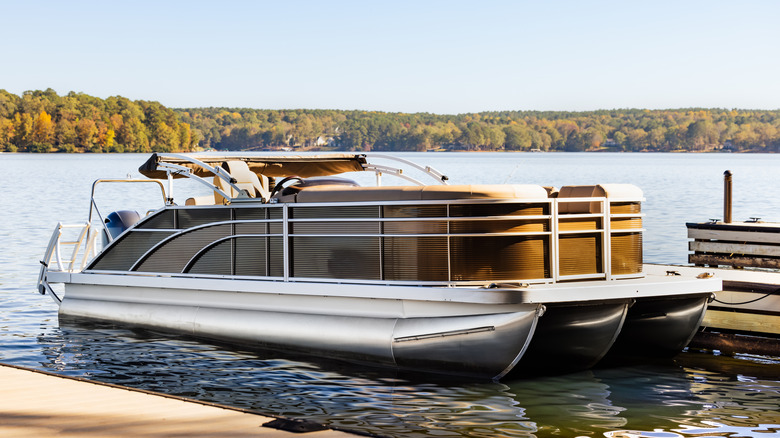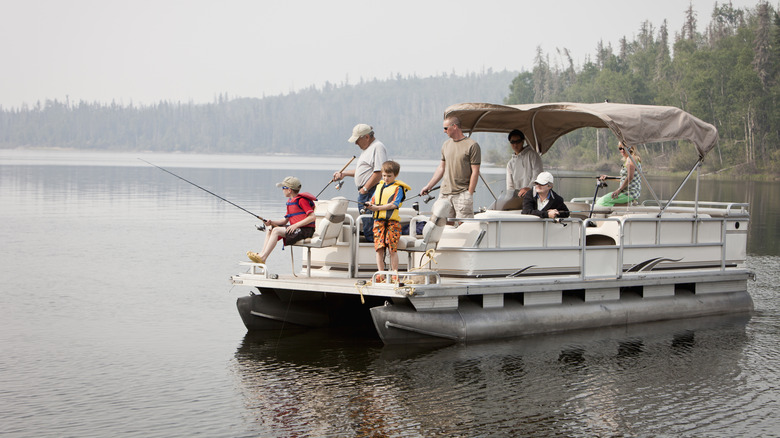What Are The Tubes On A Pontoon Boat For?
If you look at a typical, consumer-grade boat, you'd see that the bottom of it features buoyant ridges and curves. This bottom component, the hull, is what keeps the boat afloat and allows it to easily cut through the water as it travels. However, not all seafaring vessels use this same framework. Take, for example, the pontoon boat, which has two or more large tubes covering the bottom of the vessel where the curve of the hull would usually be.
These tubes go by a few different names, such as"logs, but are most commonly just called pontoons." The obvious question is why a boat would need a handful of large tubes stuck to the bottom instead of a hull. The answer is that, much like how the hull keeps a regular watercraft afloat, it's the tubes that keep a pontoon from sinking into the water, suspending the entire thing above the waves like a floating platform.
The tubes keep the entire vessel safely afloat
The tubes of a pontoon boat are completely hollow, suspending a bubble of air-filled space like a heavy balloon. Much like an inflatable chair in your pool, this suspended air allows the logs to float on water, while their sturdy metal construction allows them to hold up a substantial amount of weight without dipping or buckling. A traditional pontoon boat has two of these tubes mounted beneath the deck, with their combined buoyancy keeping everything safely afloat. Some pontoons can have as many as three tubes mounted at once; this kind of pontoon boat is often known as a "tritoon."
Suspending a deck over the water on tubes instead of a curved hull allows it to sit in a more level, comfortable fashion. This is part of what makes some of the coolest pontoon boats great for water-bound entertaining and parties; they're less like traditional boats and more like platforms held up by floaties, kind of like the flotation technology used by offshore oil rigs. The tubes' flotation also helps to keep passengers dry while the pontoon boat is in motion, as they prop the deck up higher and absorb the force from the waves, reducing splashes and sprays. This is as opposed to a fast speed boat with a curved hull cutting through the chop and splashing water everywhere.

